IV: Green Eyes II
"The iris consists of two layers: the front pigmented fibrovascular layer (the lighter strands that appear to be on top of the darker colors) known as a stroma and, beneath the stroma, pigmented epithelial cells." "In dark eyes, the stroma often contains pigment granules. Blue eyes and the eyes of albinos, however, lack pigment." ~ Straight from Wiki. So, now we can call those starbursts, eyelashes, lines and spiderwebs the stroma. The lack of pigment would lean towards white stranding.
Darker olives first, to finish off the worst of that.
1:
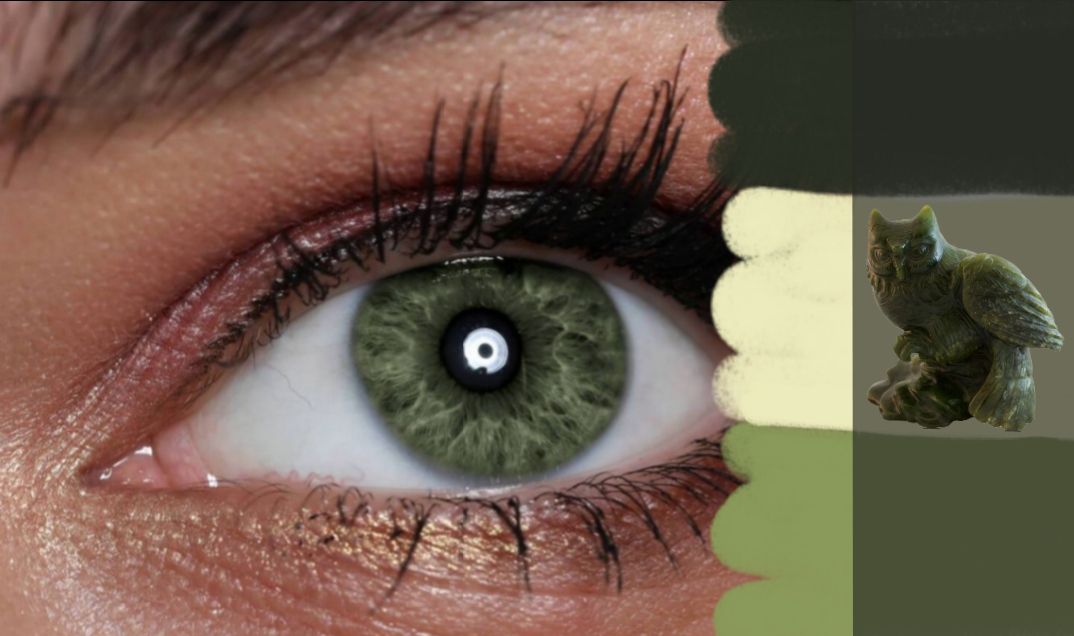
Dark olive (pine tree) overlaid with light olive (spring green (crayola))stroma that almost criss-cross like we drew a star on her eye, over and over. Monochromatic, averaging close to turtle green. The root and inner eye are the darker olive.
Bowenite
2:
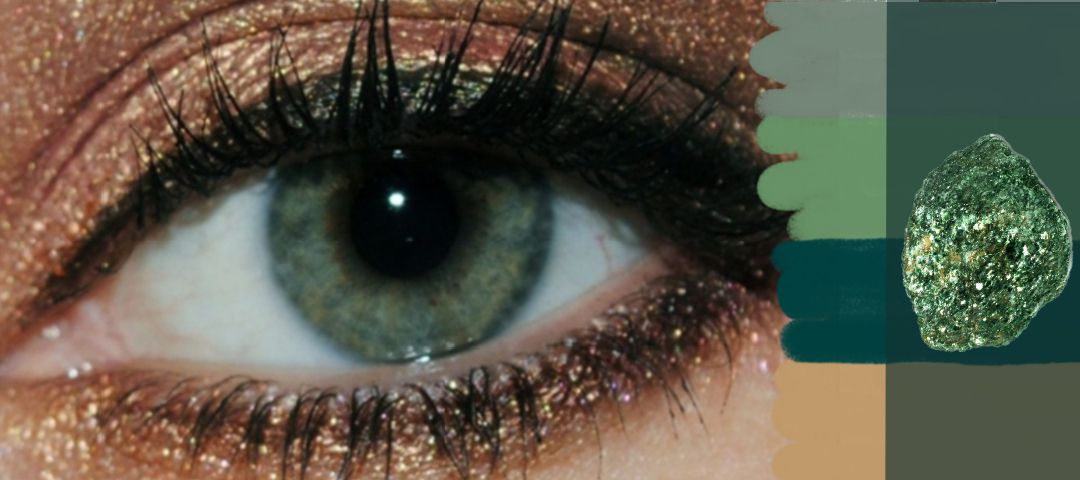
Dark olive (xanadu) with faint lacing (Russian green). Outer ring is more blue (warm black) while minor spotting and inner ring scoots towards brown (wood brown).
Fuchsite or Chrome Mica
3:
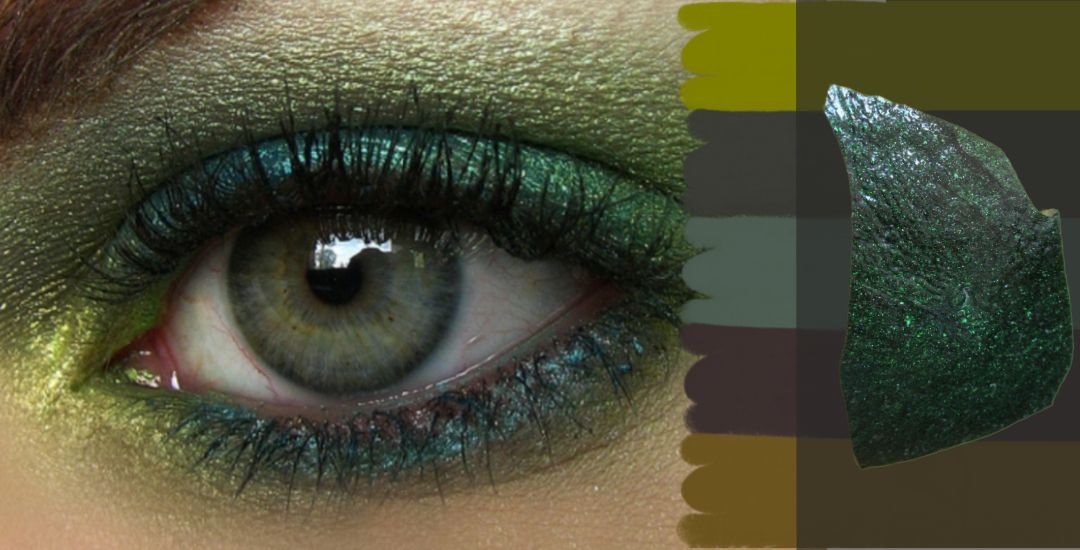
Olive waveform, black olive root, medium-dark olive (feldgrau to black chocolate) around the pupil, flecks of field drab in main.
A thing to note about dramatic makeup: the makeup usually outshines the natural iris. That is expected with brown eyes. Green loses some specialness (in my opinion) by doing an eye like this, though it is gorgeous.
Green Goldstone: this thing is a lie the whole way round. Goldstone is copper and glass. Story is some monk tripped and dumped copper into glass when one or both was liquid. Still pretty.
4:
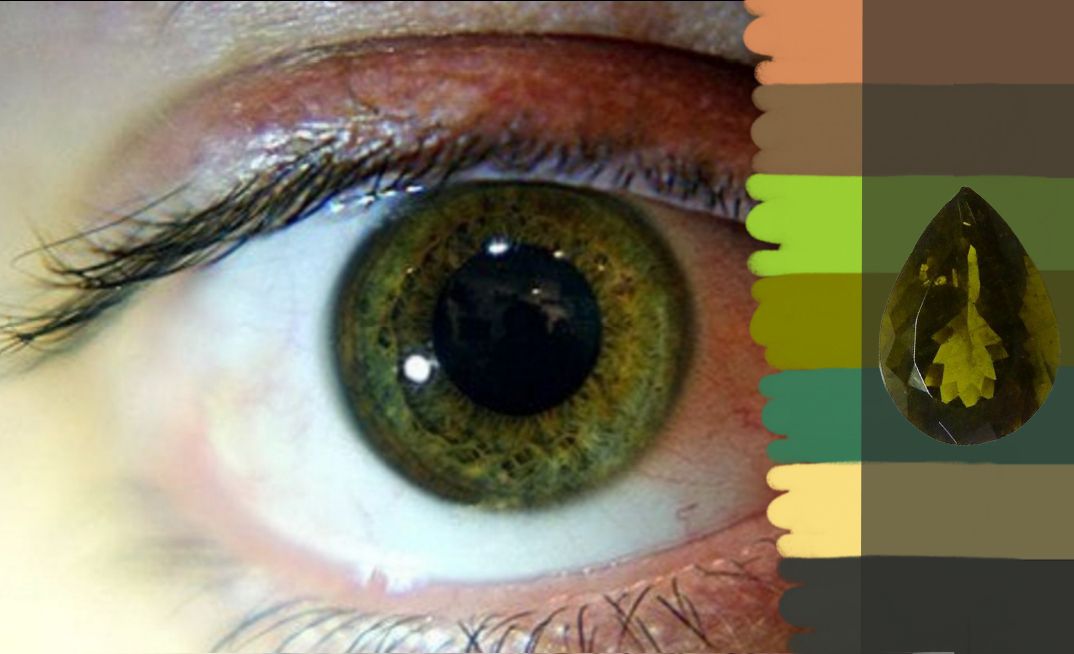
Dark olive. Light source close to eye. The stroma is so much like a pile of spaghetti that I'm thinking about a pesto sauce. Raw sienna and raw umber are the browns, green-yellow, olive, and Amazon are the greens, and goes up to mellow yellow for the highlight. Black olive rim.
This is the best lit eye to show off the thing I've been calling a waveform. It's that dark squiggly line that is halfway between both rims. These are supposed to be dead blood vessel remnants, so the patterns are random, just like your other veins are. Which explains how eyes have individual patterns.
Ekanite
5:

Varying olive (highlight is celadon, wintergreen dream and pesto as flecks of midtone), super reflective. The blue tone is what the white of the room does to the green. Hints of blue and brown do nothing to overpower the overall greeness. Similar waveform to the previous, but tighter, in peach to redwood. Limbus wavers between marengo and charcoal.
Green Zircon
6:

Brown (pale copper to blastoff bronze) and green (tea green, dark olive green, antique bronze). This is one of those rare times when the more dominant eyeshadow is useful. The green streaks aren't dominant, leaving the eye looking predominantly amber, this close up. From a distance, the eyes will register as olive, a darker shade than the eye shadow. This eye would be better labeled hazel, rather than green, but hazel isn't a destination, it's more of a kaleidoscope of color.
Outer rim ranges from black olive to licorice.
Freshwater pearl
~~~Shift to vibrant tones~~~
7:
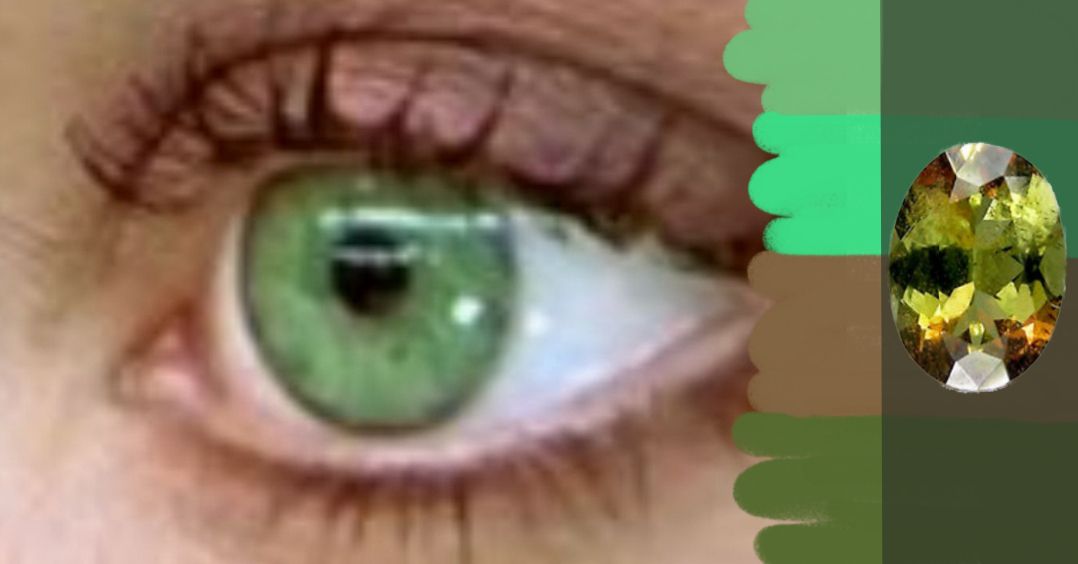
Vibrant green. Just enough blue to be fern with android green hilights, raw umber outer rim, inner is close to dark olive green.This one has a genuine eye freckle on it, just on the edge of the waveform.
Andalucite: a mix of fall colors placed by a spring colored eye? Why not?
8:
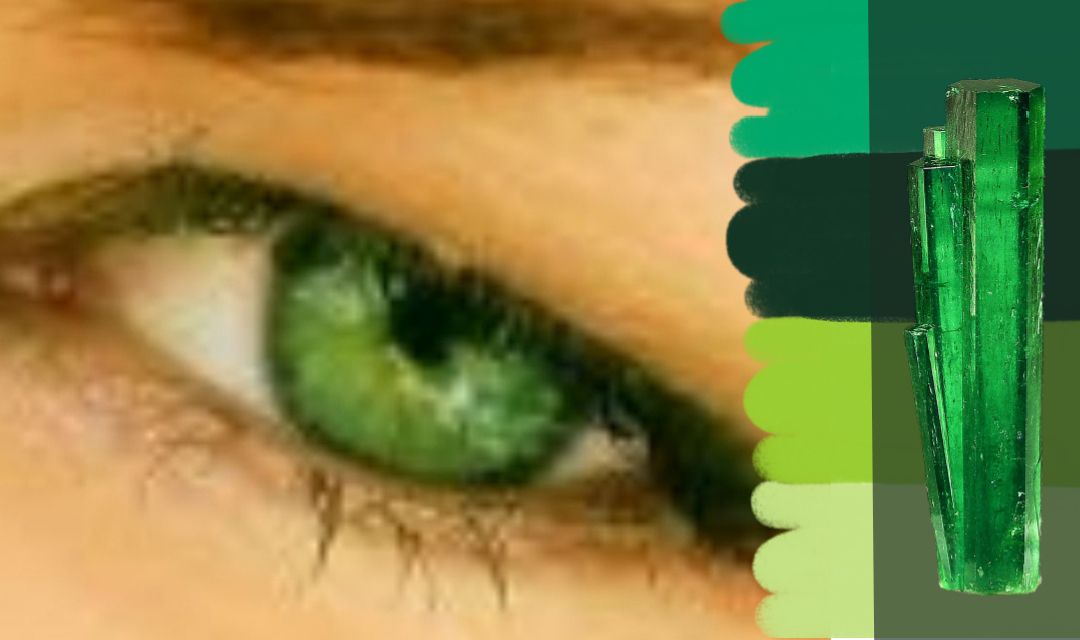
Vibrant green(jade), with Phthalo green rim. This one is reflecting a cloudy sky or tree line. Both yellow-green and yellow-green (crayola) suit, as well.
Emerald
9:

Vibrant green (dark end is India green), same colors in #12, but more HD, and the strands are wavy, giving the appearance of a green fire (highlight close to green lizard). Inconsistent root. Mids of Paolo Veronese green, Paris green, pear. Root is half taupe, the other half olive drab camouflage punctured by olive.
Peridot
10:
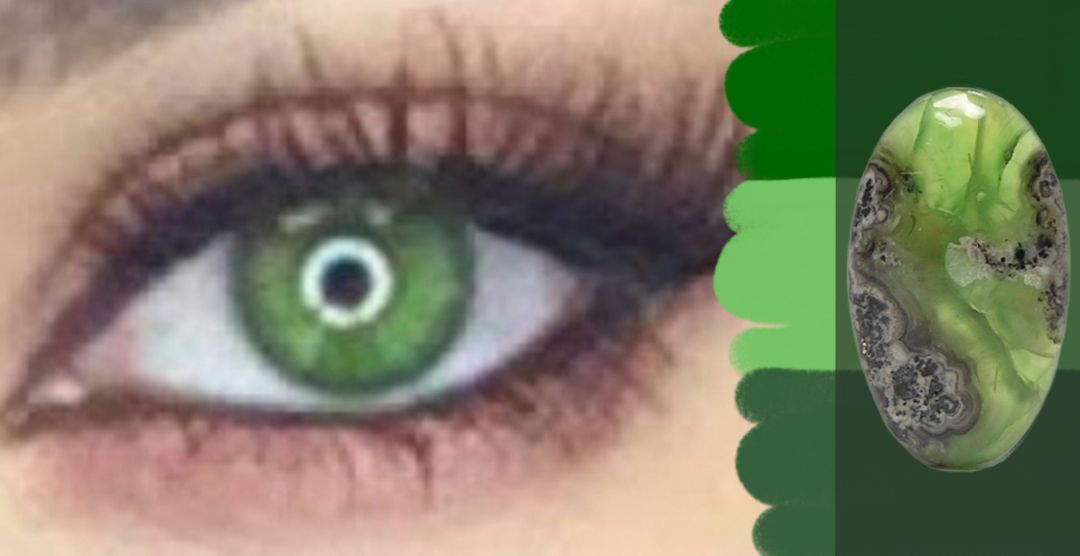
Vibrant green (Pakistan green), highlight is mantis, strong outer rim (hunter green). The quality of the pic makes details difficult, but the striations are still there, olive to lime.
Green Smithsonite
11:
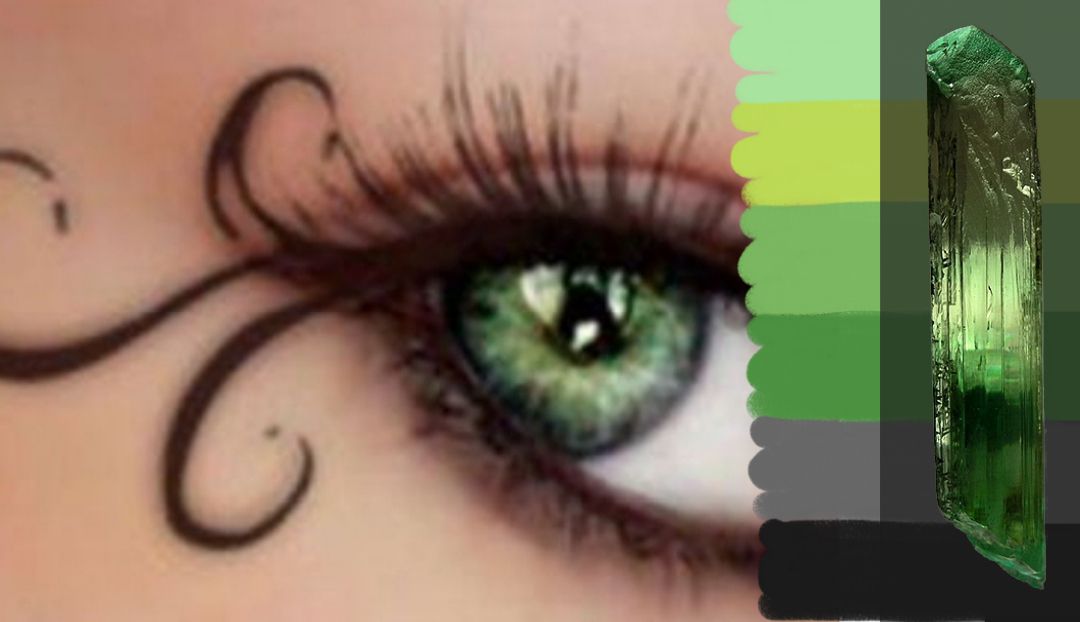
Vibrant green. Highlights are granny smith apple and June bud. Midtones are bud green and may green. The first green to act like a denim/frost combination, and nearing the limbus is granite gray to Eerie black.
Hiddenite or Green Spodumene
12.
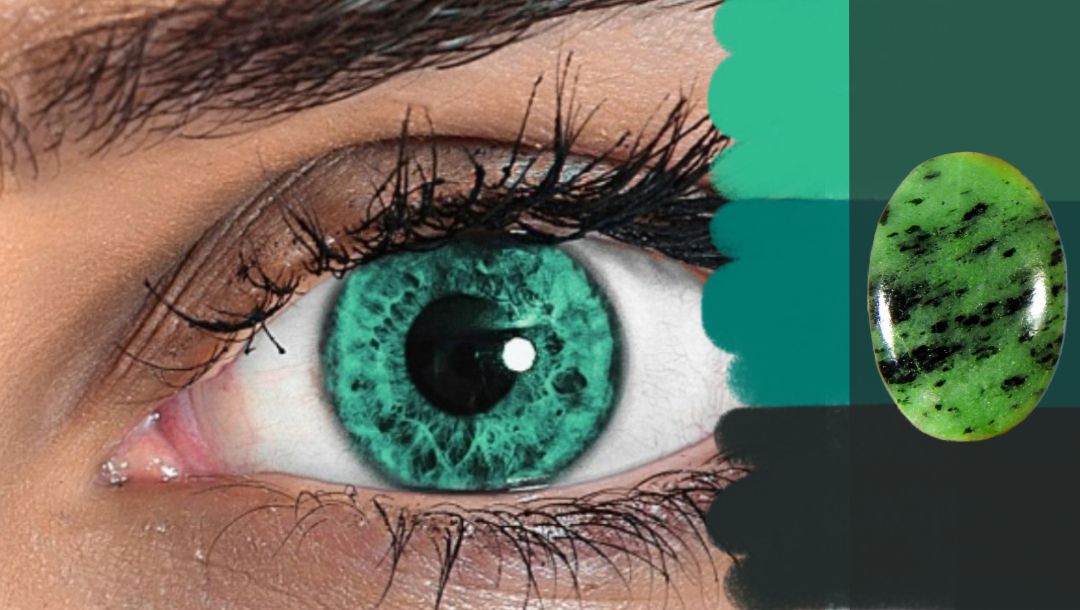
That's an unreal color, like an electric mountain meadow (pine green is the midtone, Charleston green low). Given how monochromatic it is, the artist likely chose to place a layer on top a real eye to dictate hue or color in the picture. For the under layer to appear black is an increase in contrast. Still, a brilliant eye.
Green Zoisite
13:

Jewel tone, middle green balance, high of spring green (crayola) . If I had a Chrome Diopside (warm black to Charleston green) in that color, I'd be estatic. That's some reflection.
For reference: this is the only one I own.

Interesting sidenote: warm black is the green ink that black ink is printed over on paper, to get a darker black tone. Ink loses its potency, dried on the white fibers of paper.
14:
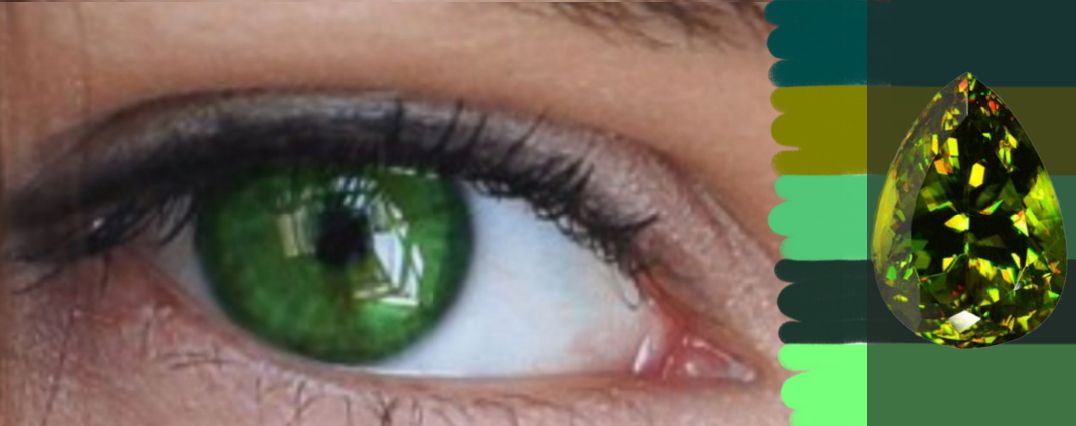
Deep, vibrant greens: deep jungle green, olive green, and Paris green makes up the main body of the iris, while the limbus is medium jungle green, and the reflective high is screamin' green. I'm betting the original was olive with canary yellow flecks, but still had the darker rim.
Green Sphene
15:
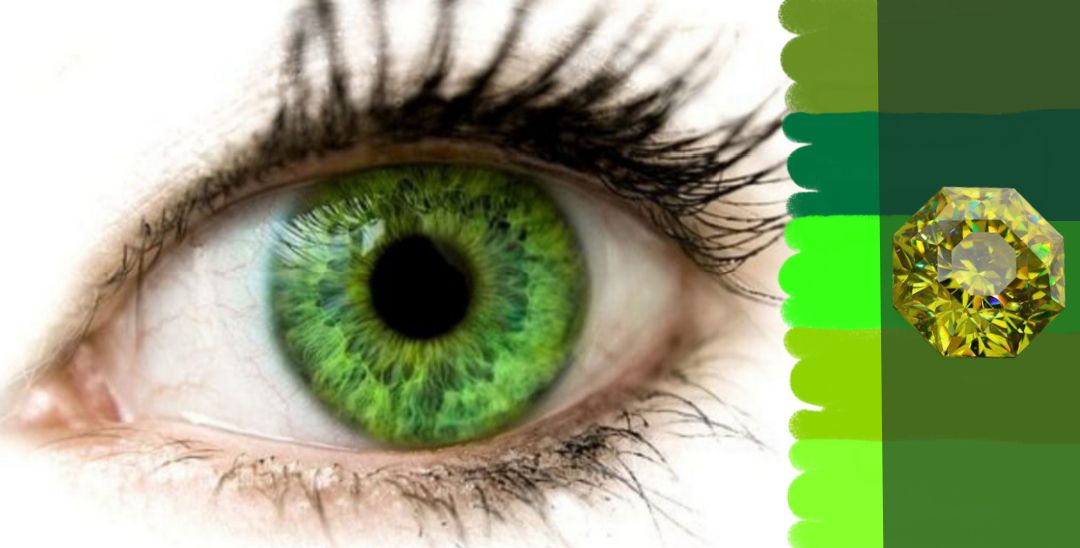
Hyper saturation, over exposed. The shiny olive drab inner rim is likely much darker, as would be the root. The wave's edge being a Dartmouth green at this saturation and overexposure is plain gorgeous. The stroma (upper strands) being a neon green (sheen green, spring frost) is a hoot.
Green Sphalerite
16:
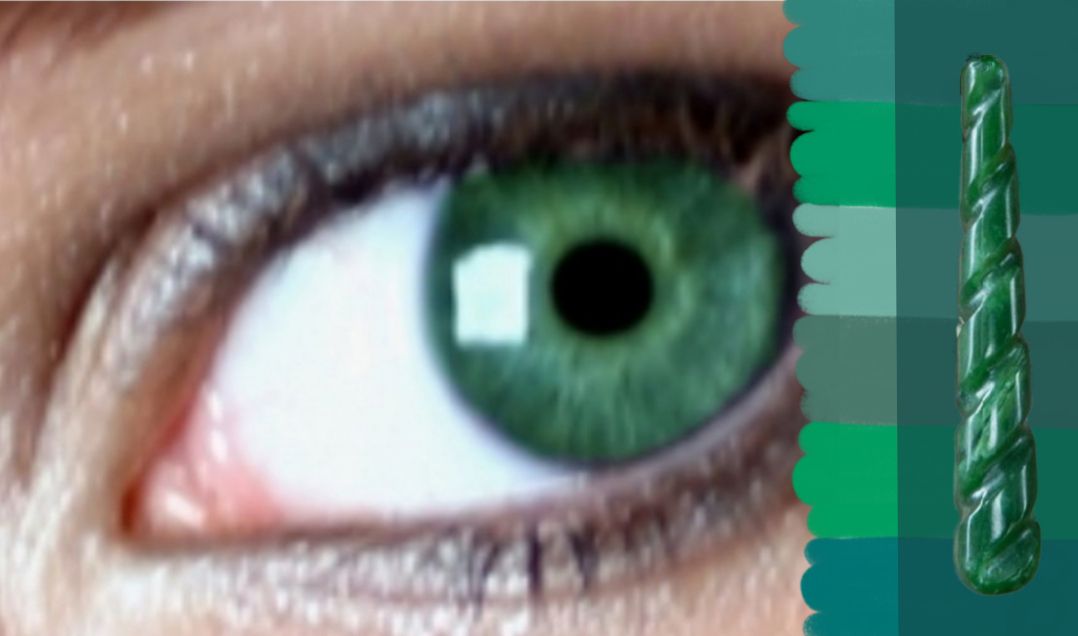
Luminous hunter green (celadon green or green-cyan) while the highlight not in the waveform is green sheen. Hooker's green root, inner ring shamrock green or skobeloff. It took ages to find this shade/hue online. This color does have a hint of blue. Call them Christmas Wreath eyes.
New Zealand Jade
17:
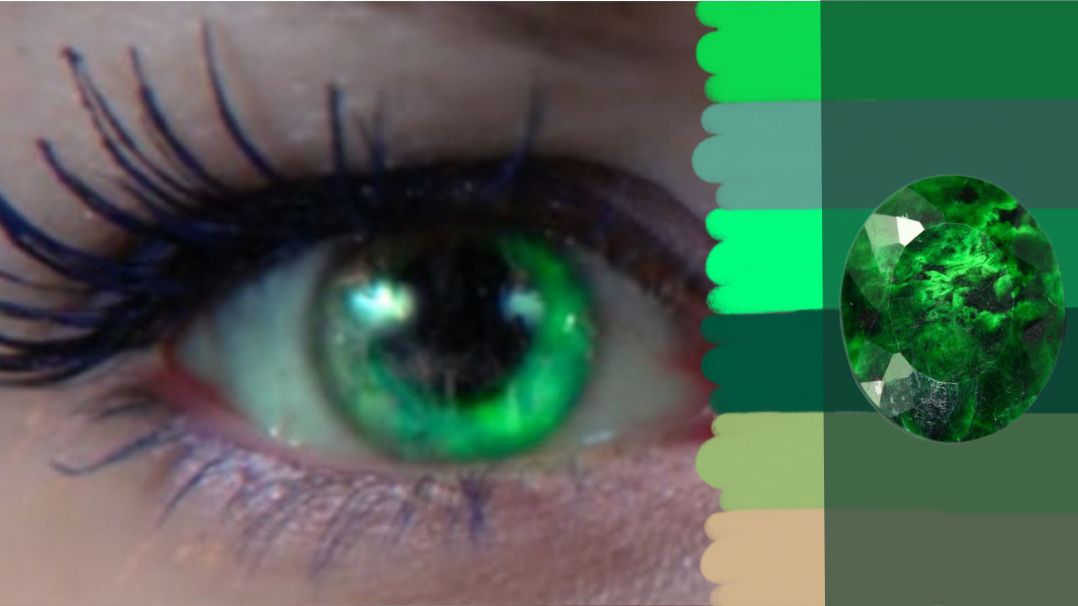
The green Disney uses for it its evil folk in Descendants. Notice on videos, they don't do much detail work, staying within what eyes look like, it's just a swirl of color overlayed on the eye, nearly malachite, a hint of polished pine and spring green for the main colors of the SFX. Gotham green is the rim, and the top left quadrant is not quite shifted to the full effect at olivine and tan.
Maw Sit Sit is a rock (made up of multiple minerals) not an individual mineral, also called a jade-albite (not actual jade).
18:
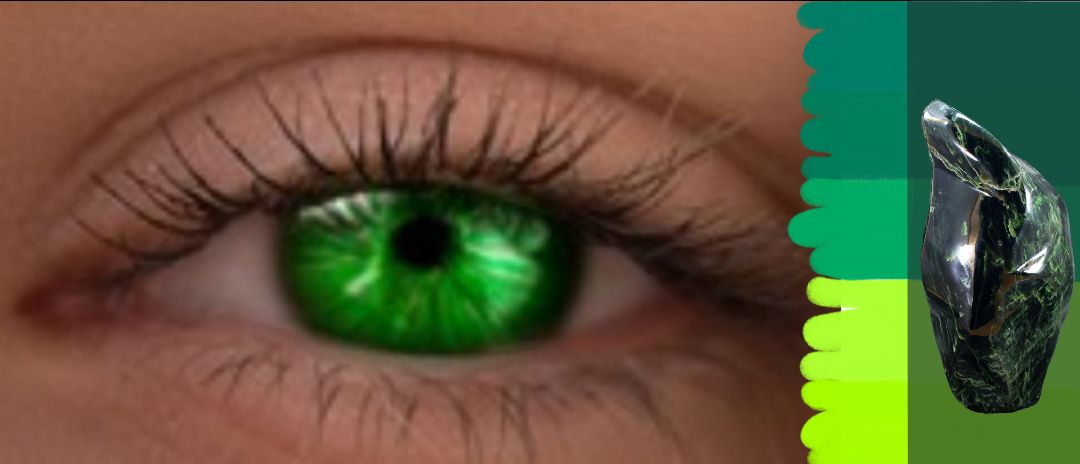
A similar color (generic viridian or Spanish viridian is the dark end, go green is the midrange, green-yellow or spring bud is close highlight), clearly a picture (not video) edit...but I would have loved Descendants going this route. (I've got a lot of Disney freaks in my family so I catch an episode or two of pretty much everything.)
Nephrite (another Jade lookalike)
19:
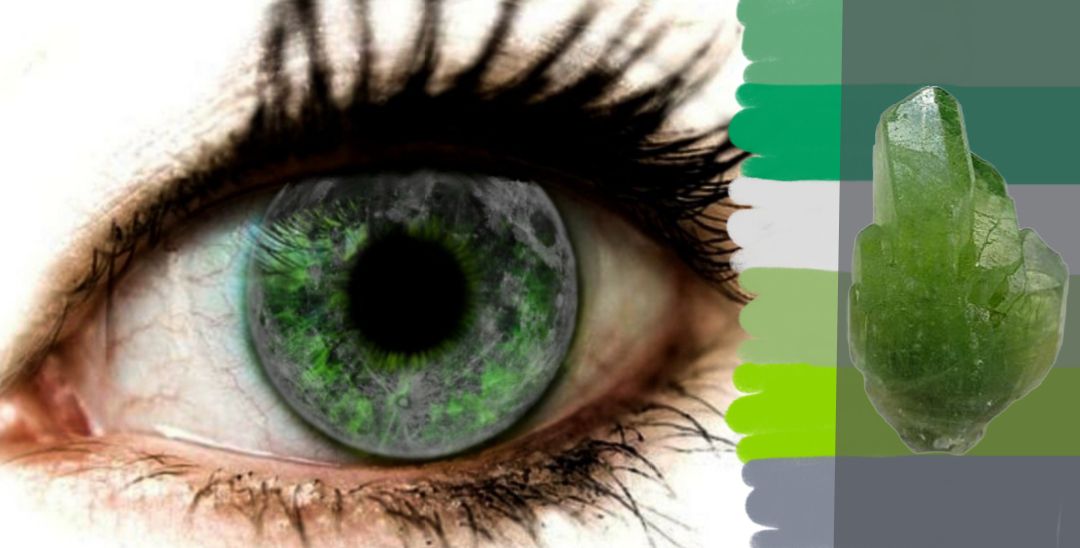
#14 and the moon combined. Room for a personal edit.
In real life, an eye like this would come across as olive with faint hints of jewel tones (shiny shamrock) at a distance. Up close, the brain would be struggling to make sense of what it is seeing. Is this moon-shaded contacts? That shiny shamrock becomes a blend of shamrock green and Gainsboro, the greens further splitting into highs like olivine and sheen green, while the grays go blue like Roman silver.
I like the look. I really do. But how would this play out in a story?
Olivine
Bạn đang đọc truyện trên: Truyen247.Pro